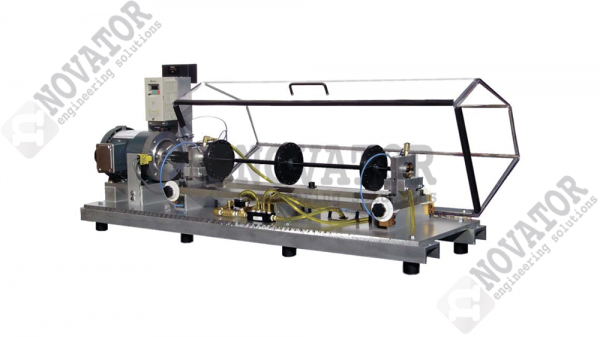Machinery Fault & Rotor Dynamics Simulator (MFS-RDS)
|
|
|
PLANB_FULLICONS-ONE
PLANB_FULLICONS-TWO
PLANB_FULLICONS-THREE
PLANB_FULLICONS-FOUR
PLANB_FULLICONS-FIVE
? Ask a question
Description
An innovative tool to study oil lubricated journal bearings
SpectraQuest’s Machinery Fault & Rotor Dynamics Simulator (MFS-RDS) is an innovative tool to study the dynamic behavior of rotors supported by oil lubricated journal bearings, as well as other common machinery faults, such as balancing and resonance study. An oil pump is provided with the simulator to drive the lubrication fluid. In addition, it provides different bearing clearance selection and controllable lubrication oil pressure for rotor dynamics whirl and whip phenomena.
Numerous Experiment Possibilities
- The MFS-RDS fitted with a resonance kit is the perfect tool to gain practical experience in rotating machinery resonance and learn resonance mitigation methods.
- With different number of rotor disks installed at various locations on the main shaft, resonances up to the third mode can be excited. The bode plot of the main shaft vibration during a coast down test is illustrated in the right figure. Three resonances can be identified clearly.
- Oil whirl and whip are important instability phenomena associated with rotors supported fluid film bearings. With proper selection of the bearing load (the number of rotor disk), bearing clearance (the selection of bearing cartridge) and oil pressure (adjusting the oil supply valve), the oil whirl and whip can be simulated using the MFS-RDS. The waterfall plot on the right illustrates the oil whirl and whip observed on this simulator. The first critical speed of the main shaft (1X), oil whirl and oil whip are all identified in this waterfall plot. In order to observe oil whirl and whip, the simulator must be running at more than twice of the first critical speed of the main rotor shaft.
- One key concept in rotor dynamics is the heavy and high spots. With the MFS-RDS and the optional kits supplied by Spectra Quest, the phase relationship between these two spots can be demonstrated.
Features
- Rotor shaft specially designed for fluid film bearing rotor dynamics simulation
- Different bearing clearance selection and controllable lubrication oil pressure for rotor dynamics study
- Convenient installation of proximity probes
- Rigid, slippage-free operation
- Split bracket bearing housing for easy rotor assembly interchanges
- Specialized bearings and rotors with split collar ends for easy replacement and installation
- Rotor shaft slides without removing mounted components for easy changes
- Couplings, rotors, bearings, and shaft can be changed without removing bearing housings
- Convenient alignment with jackscrew


